Loving Vincent: Interview with Director Hugh Welchman
Posted by Cass Art on 13th Oct 2017
LOVING VINCENT, the first fully painted, feature length film of its kind, tells the life and controversial death of Vincent van Gogh through his paintings and by the characters that inhabit them.
Beginning a year after his demise, this portrait of the artist is built via a series of interviews conducted by Armand Roulin – a regular model for the artist’s portraits – who becomes obsessed with van Gogh’s death, caused by a bullet wound to the stomach. Was it an accident? Was it suicide? LOVING VINCENT sets out to explore one of art’s great mysteries.
We caught up with Director Hugh Welchman to find out more about how the concept for the film began and how the film brings Van Gogh's work to life...
Where did the concept for the film begin?
Dorota Kobiela came up with the idea. She trained as a painter, but after she graduated all her jobs were in animation and film. She was approaching 30 and she missed painting, and worried that she’d strayed away from her true passion.
However, she was also committed to film making, so she decided to paint a film. She was going to bring her own paintings to life, but then she was re-reading the letters of Vincent van Gogh, a favourite book of hers since she first read it when she was 15, and that she often dipped into when she was looking for inspiration - and it hit her that she should bring his paintings to life to tell his story.
It was such a moving story and his paintings are so connected to his life. In the letter found on Vincent’s body after he was dead it said “We cannot speak other than by our paintings”. Dorota wanted to bring his paintings to animated life to speak for him.
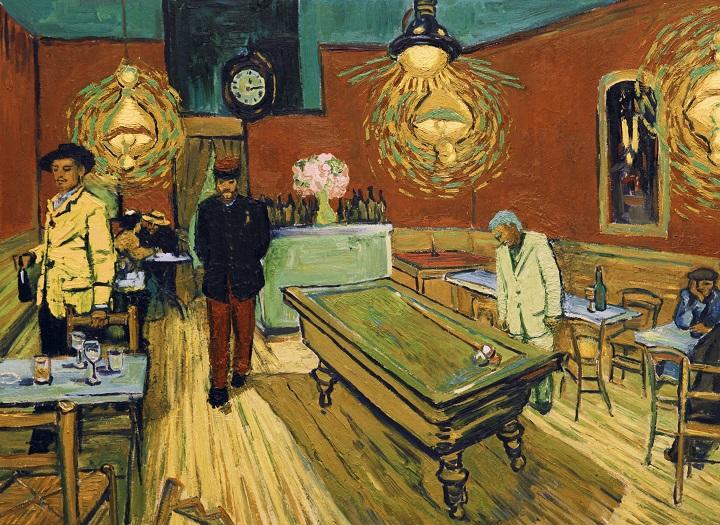
Image: Night CafÇ, Arles Lt Milliet (Robin Hodges) and Armand Roulin (Douglas Booth)
Our first steps were the normal ones for animation: script, storyboard, animatic, pre-viz. set designs and character designs (both painted in oils on canvas).
Next was the live action reference shoot. This was very visual effects heavy, as we mainly shot on green screen. And trying to achieve the perspectives in Vincent’s paintings gave us a lot of headaches, but we dealt with all of this at the pre-viz stage, which was a good thing, as we only had 4 weeks of live action shooting.
The heart of this film was always a collaboration between actors and painting animators. Vincent was always working from real life models in front of him, and he wanted to bring out the character of his model through his use of colour and his impasto. So we wanted to do the same, but moving.
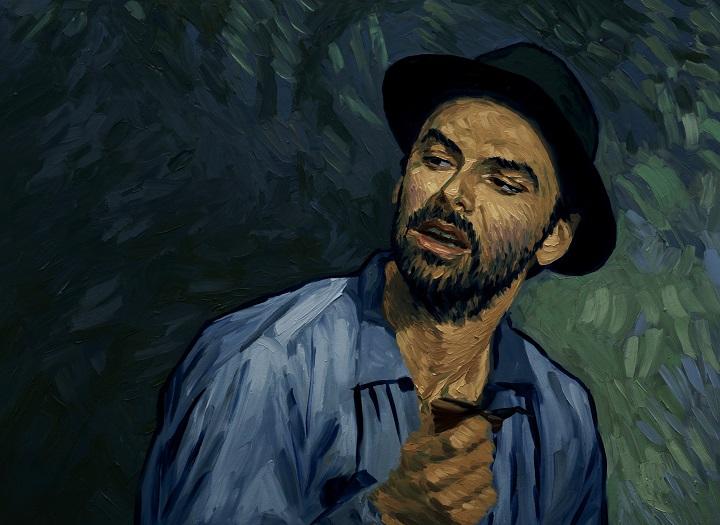
Image: Boatman (Aidan Turner)
In the painting-animation process the animators had to retain, or bring out, the performances of the actors in the painting process. We wanted every shot to be more intense in terms of performance when viewed in animation than it had been in live action.
The painters mainly worked by studying the frames on a monitor, and then re-imagining this into Vincent’s style. For each shot they had the live action material, and also the relevant Vincent’s paintings at high resolution, and of course the shots previously done for a particular character or location. Everything was closely supervised - we had 6 painting supervisors. Each supervisor specialised in different characters or different types of paintings, for example small characters.
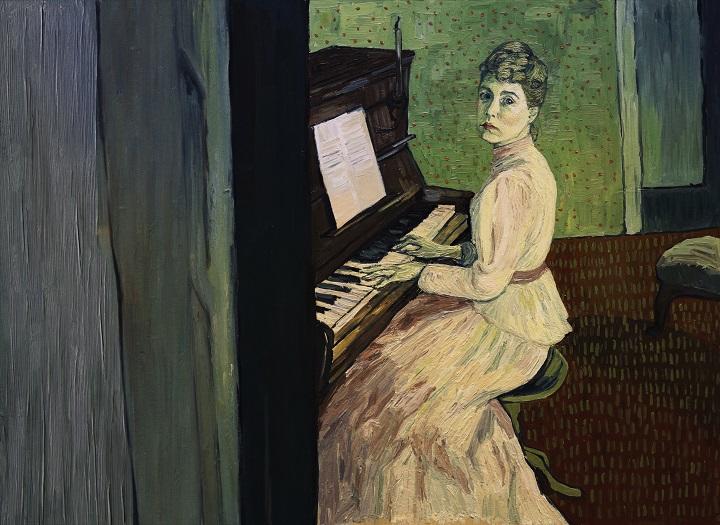
Image: Marguerite Gachet (Saoirse Ronan) at the piano
First we had interviews with an unseen interviewer, as if it was a mockumentary, and we weren’t satisfied with this approach. We needed a character to lead us through the story.
As the controversy and conflicting views comes from characters in Auvers-sur-Oise, it felt natural that it should be someone from outside Auvers. An outsider who has to work out who’s version of events is the truth.
At one point it was Postman Roulin, rather than his son, but the trouble was he was such a staunch supporter of Vincent. It felt like we needed someone who would be sceptical, at the same time as wanting to get to the bottom of what really happened.
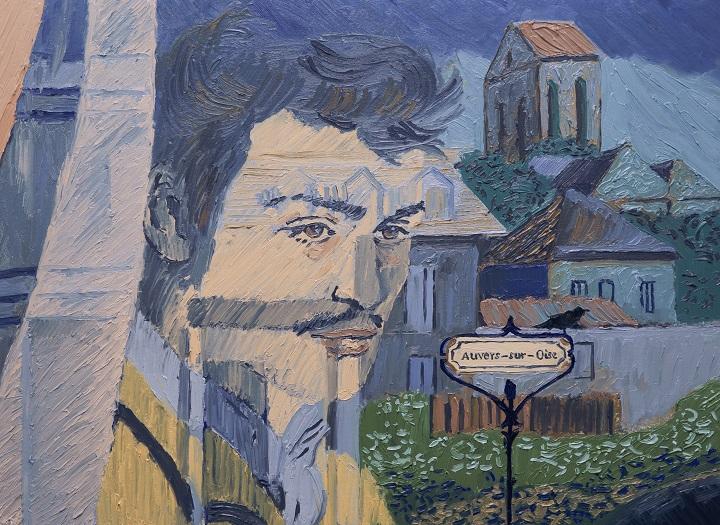
Image: Armand Roulin (Douglas Booth) arriving in Auvers by train
Armand Roulin had good reason not to be well-disposed to his father’s drinking buddy. After his father took an assignment in the next city, and Armand was also in another town on his black-smith’s apprenticeship, his mother fled their home for her parent’s village because she was scared of Vincent.
You can imagine that a tough young man wouldn’t have taken kindly to that. And we know that in later life Armand did become a policeman, so he seemed to fit. Also we just loved his portrait; it is one of Vincent’s greatest.
Armand actually started as a cameo in our early drafts, but with his big personality his role grew with each draft, and then he was the main character. It felt like he was muscling his way into the script, that he was meant to be there.
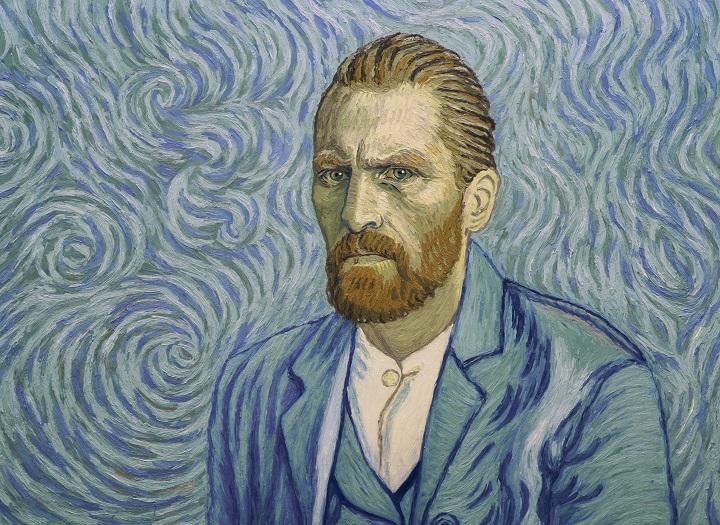
Image: Vincent van Gogh (Robert Gulaczyk) painting in the rain
I think it gave it more of a documentary feel, as if you are watching the events unfold, whereas in fact it is the recollections of the people Armand meets. We wanted to distinguish clearly between the past and the present.
We also wanted to give people’s eyes a rest! We were concerned that 94 minutes of swirling intense Vincent style might be too much. I don’t think that now, but I’m very happy with the black and white, as it feels an integral part of the film.
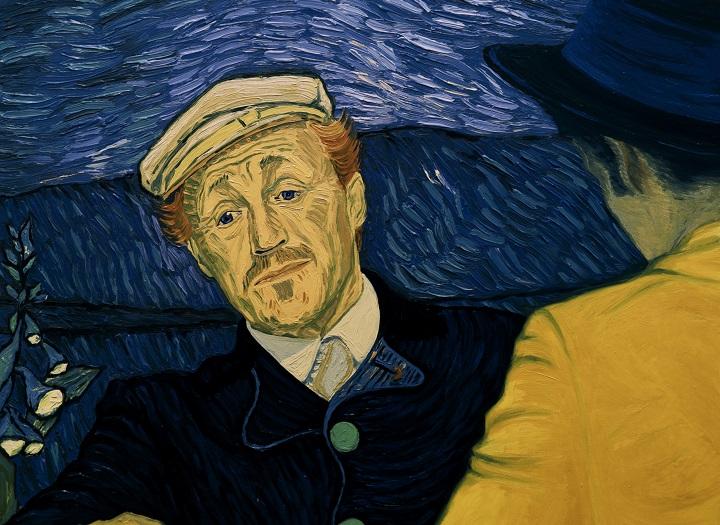
Image: Dr Gachet (Jerome Flynn)
How did you select the artists?
We asked painters to submit their portfolios online. Piotr Dominak, our head of painting, had to go through all 5,000 of them and grade them from 1 to 5. Anyone who’s portfolio was a 3 or above was invited to a 3 day painting animation audition. 500 artists were invited, and 125 made it through to the production.
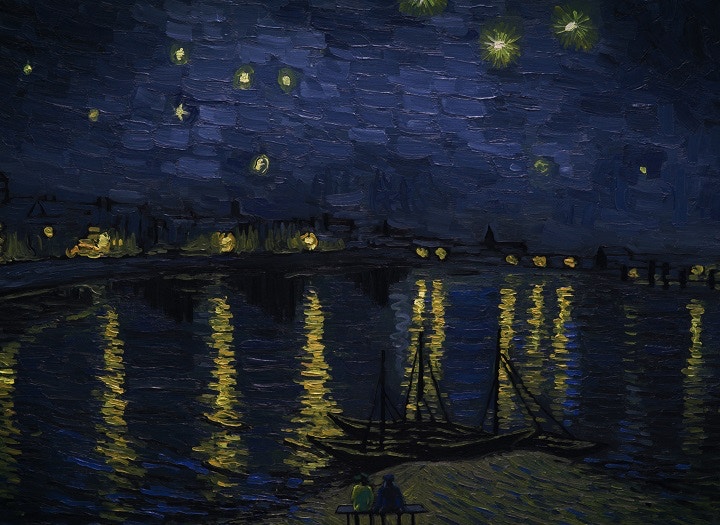
Image: Landscape Starry Night over the Rhone
Often there were moments when a frame would mirror a Van Gogh painting. How did the works inform the narrative?
Ouch! This was a headache, but also it was the heart of the project. It is hard enough writing a script without having to be tied into hitting particular images 77 times! It was a slow process.
Our starting point was bringing the portraits to life. So if Postman is against a background of pure yellow, then you have to think where could he be? Our answer was in the Café Terrace at Night, which has walls bathed in the yellow light of gas lamps.
Sometimes we had paintings we really wanted to include, but there was no way we could do this with out detouring from the story. Even in this film story is king, it always has to be in film, film is a story telling medium. We ended up cutting around 30 paintings from the film, at script stage, which was a sad process for us.
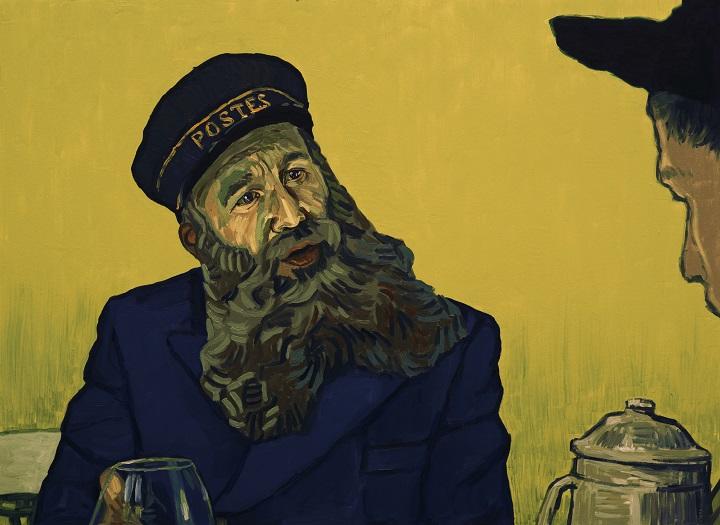
Image: Postman Roulin (Chris O'Dowd)
Did the artists’ work on individual frames or characters, or was it a collaborative painting style?
Yes we put people into specialisations. So some people specialised in just Doctor Gachet, others in Adeline. Some artists specialised in Black and White, others in small characters and landscapes in Vincent’s style. Everyone had to paint Armand, because we had so many Armand shots. We had to assess what people’s particular strengths were, and then try and allocate them shots accordingly
How big were the paintings and do you know how much paint was used during the making of the film?
The paintings were 60cm by 49cm – and we used 3,000 litres of Royal Talen’s paint.
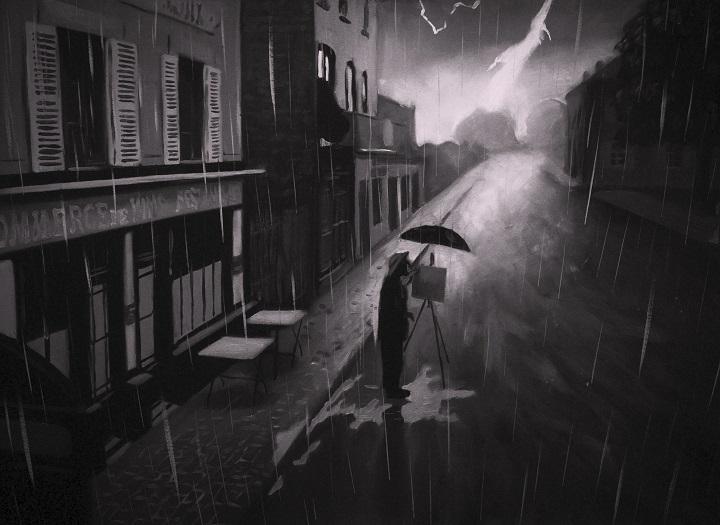
Vincent van Gogh (Robert Glyaczk)
Feeling Inspired?
LOVING VINCENT debuts in Cinemas across the country on Friday 13th October 2017. Find your nearest participating cinema here.
Follow the conversation and share your thoughts on the film on social media, using the hashtag #LovingVincent
Image Credits
© Loving Vincent Sp. z.o.o. and Loving Vincent Limited 2017


